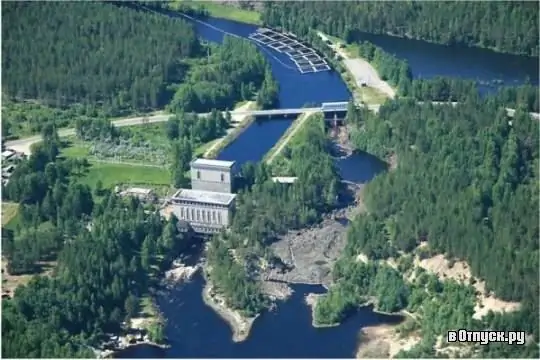
Description of the attraction
The ancient natural monument of the village of Girvas in Karelia is the remains of a volcano that originated more than 3 billion years ago. The volcano has not been active for a long time and nature did a good job to erase the consequences of the volcano's activity, but now you can still see fossilized lava flows. Girvas volcano was discovered by geologist Svetov in the 60s of the XX century.
Girvas can be attributed to the Icelandic type volcanoes, it combines ancient sedimentary and younger volcanic rocks. After a hydroelectric power station was built here, the canyon was opened. Now you can see the texture of lava flows and fossilized volcanic "bombs" with gas voids inside. The lava tongue is very clearly visible near the coast. The lava layers around Girvas are about 100 m thick, and the area of the entire lava field is 1000 km2, it consists of 17 smaller flows and runs from Girvas to Svatnavolok. The crater of the volcano was found relatively recently and, according to the assumptions of geologists, it is the oldest crater preserved on earth.
Nowadays, on Girvas, you can see the accessible part of the volcanic apparatus: a side slope of a lava cone, an explosion tube, a vent. The latter is 20 x 50 m in size and stretches in a northeastern direction. Girvas is a stunningly beautiful place in Karelia, where ancient rocks are adjacent to sandy deposits from the Ice Age, and the Suna River flows between mighty pine forests.
Reviews
| All reviews 3 Angelica 2015-15-04 21:37:39
Ancient volcanoes in Girvas: photos, reviews
The Suna River never flowed through the lava flows of the ancient volcano - it is an artificial canal, which, like the automobile dam on the historical channel of the Suna River (at the other end of the village), was built in the second half of the 30s of the last century by the hands of political prisoners, and Palyeozerskaya GE …






